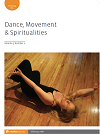
Full text loading...
 , Melina Scialom2
, Melina Scialom2 , Diego Pizarro3
, Diego Pizarro3
How can we experience and mobilize the spirituality of Rudolf Laban’s praxis in the turn of the twenty-first century – in such a way that it makes sense to local (Brazilian) and global concerns of ecological being, neurodiversity and performative living? The intent is not to return to the modernist ideas Laban launched in the first half of the twentieth century, but to consider the twenty-first-century’s scholarship that is actualized in the practice and research of contemporary practitioners as an understanding of Laban in an expanded field. We consider that Laban in the twenty-first century is directly dependent on the individual embodiment and subjectivation of movement principles that merge a cross-cultural, somatic, theatrical and pedagogical practice. Following such thinking, in this article we aim to, through an extensive practice research of three practitioners, discuss the ways in which, in our practices of Somatics and environmental performance, we have been articulating the spirituality of Laban’s praxis within a contemporary and decolonial context.

Article metrics loading...

Full text loading...
References


Data & Media loading...

Publication Date:
https://doi.org/10.1386/dmas_00043_1 Published content will be available immediately after check-out or when it is released in case of a pre-order. Please make sure to be logged in to see all available purchase options.